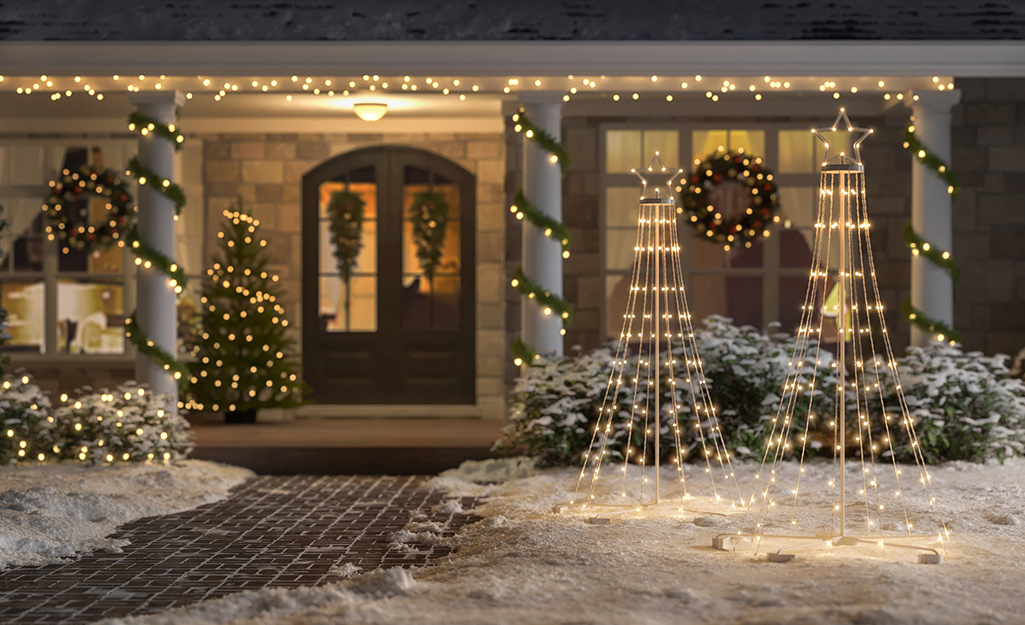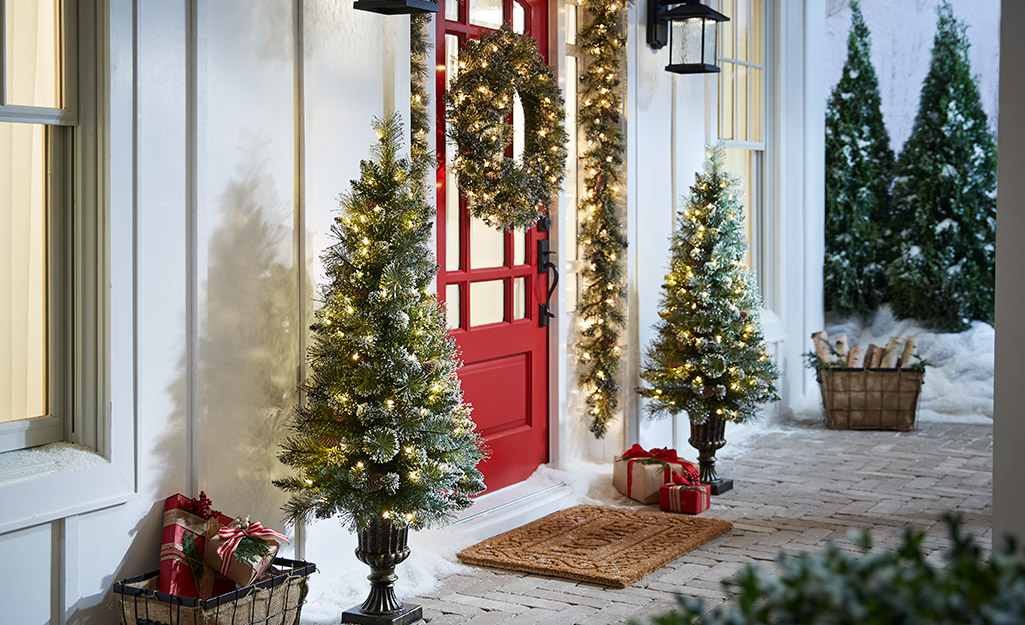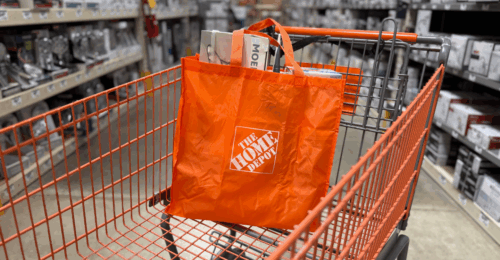As the holidays grow near, it’s never too early to start planning ways to be more sustainable this season. An obvious place to start is with the holiday decorations that require energy, namely lighting. Whether you are a modest decorator, or your house lights up the neighborhood, the lights you use can make a difference in your carbon footprint and your energy bill this holiday. Traditional holiday lights feature incandescent bulbs, which are becoming hard to find these days because they are so much more inefficient than LEDs.

The Energy Saving of LEDs
The name LED is short for light-emitting diode and refers to the way the bulbs produce light. Compared to incandescent bulbs, which use filaments to produce light and which generate heat, LEDs are solid state semiconductors that produce light when energy flows through them. LEDs produce very little heat when turned on, which means they require less energy and can run longer. In fact, incandescent bulbs waste energy, up to 90%, by releasing it as heat.. In short, LEDs are far more efficient than incandescent bulbs.
Just how much more efficient are LEDs?
- LEDs require up to 90% less energy to operate than incandescent bulbs
- Per bulb on a set of string lights, incandescents use 2 Watts and LEDs use 0.048 Watts
- The comparable savings in your monthly electrical bills is 22 cents vs. $13.65
- LED bubs last 25 times longer than incandescent bulbs

A Smaller Carbon Footprint
By now, you may be wondering how this energy efficiency adds up to help the climate. Neither lightbulb is carbon neutral, meaning that the only net-zero solution is to abstain from holiday lights altogether. That said, you can substantially reduce your emissions by choosing LEDs.
The Department of Energy estimates that .85 pounds of CO2 are emitted for every kWh of electricity produced in the U.S. Based on the wattage listed above, we can infer that a string of 100 incandescent bulbs emits 17 pounds of carbon, compared to the 4 pounds LEDs emit. Incandescent bulbs emit over four times the CO2 of LEDs.
A 2020 study by Arcadia energy revealed the massive impact that incandescent bulbs can have on carbon emissions. Accordingly, if roughly half the households in the U.S. that celebrate Christmas used nine strings containing 100 incandescent bulbs apiece, the associated total carbon emissions for the month of December would be a startling 2.4 million metric tons. If the same households used an identical amount of lights but switched to LEDs the carbon emissions drop to 620,000 metric tons. Again, the carbon emissions of LEDs are 75% less than that of incandescents.
The Same Holiday Spirit
Suppose you are a stickler for traditional lights and have been holding on to those incandescent bulbs, believing that LEDs can’t be as beautiful. If so, it’s time to rethink your options. LED technology has improved vastly over the last few years. You can now purchase these energy-saving bulbs in different shades of white, which let you match your old bulbs.
For a warm, golden-hued light reminiscent of candlelight or more traditional bulbs, use warm white LED bulbs. Cool white LEDs produce a white light similar to that of a fluorescent lantern and are often said to have a blue tint. Some LED bulbs have dome tops with either flat heads or softly rounded heads. Others are molded into the traditional teardrop shape. For the most part, for every traditional light you give up, there’s an LED version available.
Recycling Old Incandescent Bulbs
Once you make the switch to LEDs, consider recycling your old incandescent string lights. Check with your local municipality as many offer holiday light recycling during the months of November and December. Other options include greencitizen and HolidayLEDs.






